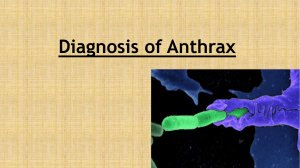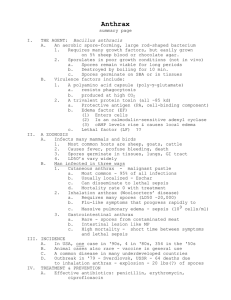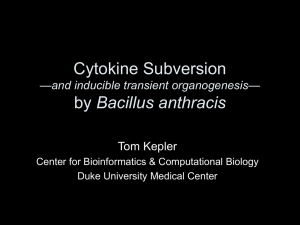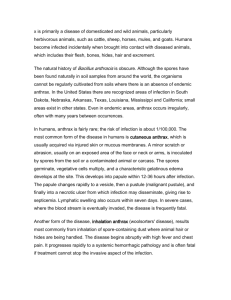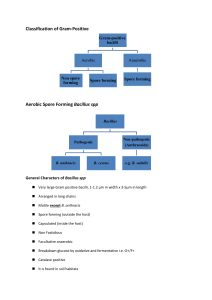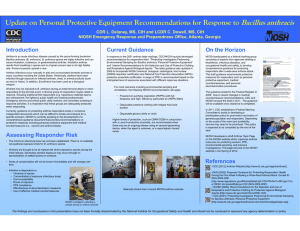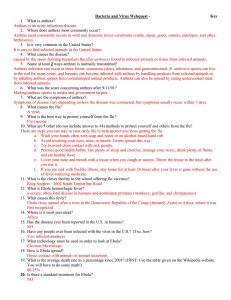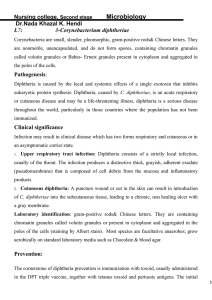Abstract - Department of Chemistry
advertisement
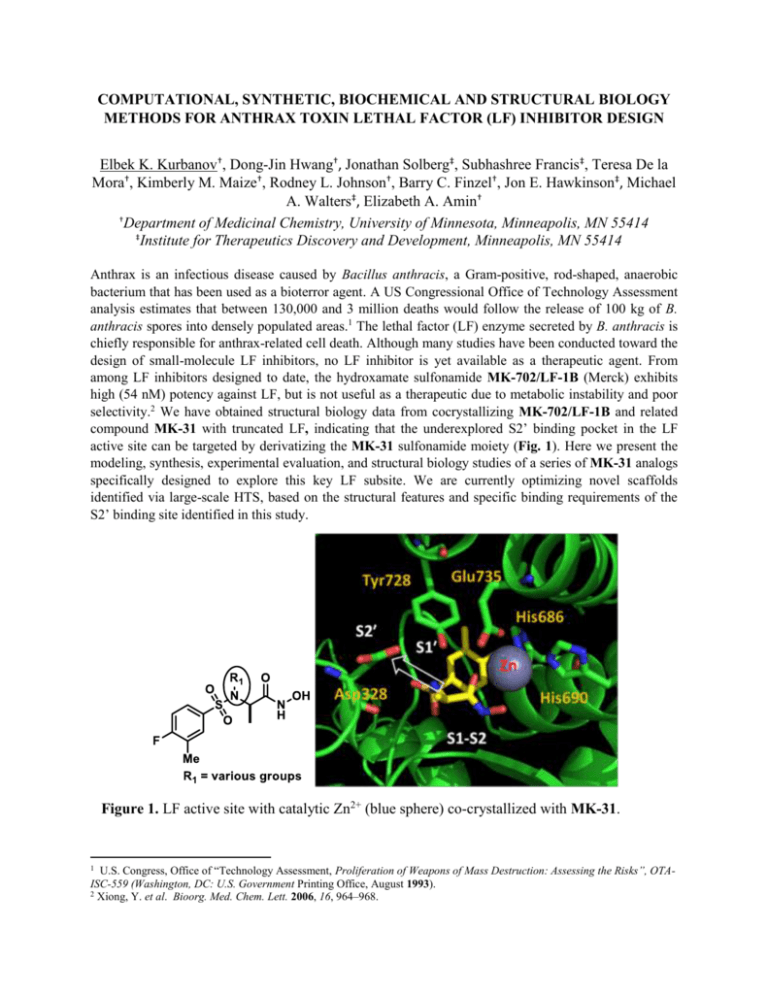
COMPUTATIONAL, SYNTHETIC, BIOCHEMICAL AND STRUCTURAL BIOLOGY METHODS FOR ANTHRAX TOXIN LETHAL FACTOR (LF) INHIBITOR DESIGN Elbek K. Kurbanov†, Dong-Jin Hwang†, Jonathan Solberg‡, Subhashree Francis‡, Teresa De la Mora†, Kimberly M. Maize†, Rodney L. Johnson†, Barry C. Finzel†, Jon E. Hawkinson‡, Michael A. Walters‡, Elizabeth A. Amin† † Department of Medicinal Chemistry, University of Minnesota, Minneapolis, MN 55414 ‡ Institute for Therapeutics Discovery and Development, Minneapolis, MN 55414 Anthrax is an infectious disease caused by Bacillus anthracis, a Gram-positive, rod-shaped, anaerobic bacterium that has been used as a bioterror agent. A US Congressional Office of Technology Assessment analysis estimates that between 130,000 and 3 million deaths would follow the release of 100 kg of B. anthracis spores into densely populated areas.1 The lethal factor (LF) enzyme secreted by B. anthracis is chiefly responsible for anthrax-related cell death. Although many studies have been conducted toward the design of small-molecule LF inhibitors, no LF inhibitor is yet available as a therapeutic agent. From among LF inhibitors designed to date, the hydroxamate sulfonamide MK-702/LF-1B (Merck) exhibits high (54 nM) potency against LF, but is not useful as a therapeutic due to metabolic instability and poor selectivity.2 We have obtained structural biology data from cocrystallizing MK-702/LF-1B and related compound MK-31 with truncated LF, indicating that the underexplored S2’ binding pocket in the LF active site can be targeted by derivatizing the MK-31 sulfonamide moiety (Fig. 1). Here we present the modeling, synthesis, experimental evaluation, and structural biology studies of a series of MK-31 analogs specifically designed to explore this key LF subsite. We are currently optimizing novel scaffolds identified via large-scale HTS, based on the structural features and specific binding requirements of the S2’ binding site identified in this study. Figure 1. LF active site with catalytic Zn2+ (blue sphere) co-crystallized with MK-31. U.S. Congress, Office of “Technology Assessment, Proliferation of Weapons of Mass Destruction: Assessing the Risks”, OTAISC-559 (Washington, DC: U.S. Government Printing Office, August 1993). 2 Xiong, Y. et al. Bioorg. Med. Chem. Lett. 2006, 16, 964–968. 1
